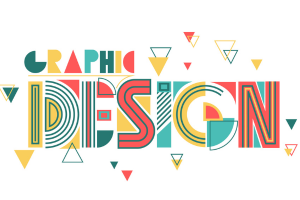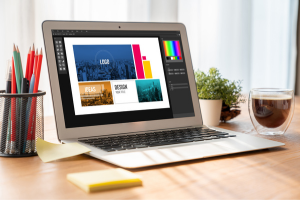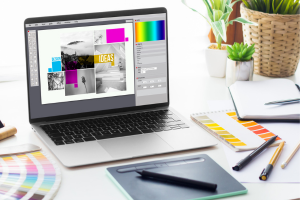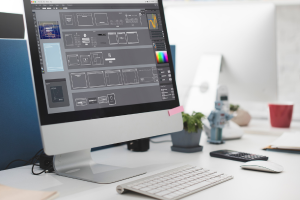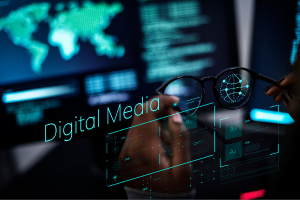Modern Logo Design and Branding Strategies to Future-Proof Your Business Today, organizations must constantly change their trends, technologies, and consumer preferences as everything is fast-paced in the digital world itself. Among the many ways to future-proof the business, nothing is more powerful than effective logo design and branding. It is the cornerstone of your brand identity. It also defines your business in the eyes of consumers.
A good logo, together with decent branding, will help your organization become miles ahead in standing out, build confidence, and stay relevant in a fast-changing market. This article highlights modern strategies in designing logos and branding, which will keep your business ahead of the competition in the future and ensure a long-lasting benefit.

1. Realize the Necessity of Designing a Logo with No Time Limit
A perfect logo is ageless. It is designed to mean your brand for several years to come. Although trends may affect logo design, it is very important to make sure that the logo has an enduring and futuristic quality to withstand changing trends over the years.
The modern-day concern in logo design calls for simplicity and clarity. It is a well-known fact that the logos of companies like Apple, Nike, and Coca-Cola have remained unchanged for decades because of their simplicity, versatility, and easy recognition. While designing a logo, create clean lines, work with memorable shapes, and bring out colors that reflect your brand’s core.
Also, it’s how you can understand the difference between time and medium. Be it on a billboard, on your website, or your social media portals, a logo has to be possible to exist in any type of marketing. Logo design and branding strategies have to take about how your logo appears in every size, medium, or dimension.
2. Add Brand Storytelling in Your Logo Design and Branding
Your logo symbolizes the story of your brand. It speaks for your entity: who you are, what you stand for, and what value you deliver to your audience. Therefore, when it comes to modern logo design and branding, brand storytelling should always be factored in.
Devote some time to understanding the history, mission, and values of your brand. Once you have a clear picture of that, incorporate those aspects into your logo design. Storytelling works through and beyond the logo itself; communications by your business through all touchpoints contain brand story elements. When a logo matches the brand’s story, the buyer receives a consistent and authentic experience that builds trust and emotional connections.
3. Concentrate on Flexibility and Scalability
Modern logos have to be very flexible and scalable. They should look good on anything from a mobile phone screen up to a mammoth trade show banner. The other two principles come into play here: simplicity and adaptability.
Nike is known for the Swoosh, and McDonald’s is famous for the Golden Arches, but both logos are simple; both are instantly recognizable, iconic, and scalable up or down. A very detailed logo may cease to exist mentally when scaled down for mobile or social media avatars.
In the design and branding process, the one true test of a logo is that it works on everything, from small devices to large print formats. This involves testing your logo at different sizes so it remains legible and impactful.
4. To Maintain Brand Consistency Across All Platforms
For a business to be adequately prescient, it must maintain continuity of semblance on all platforms and avenues. A logo is one component of your logo design and branding strategy, but conformity is the most important in establishing recognition and trust among your audience.
In this digitalized world, businesses meet their customers through multiple platforms that include websites, social media, email marketing, and physical shops. Your logo and brand elements need to remain stable on all these platforms.
Modern branding guidelines account for a color palette, typography, and imagery that are all supposed to convey the brand identity. For example, Coca-Cola uses a certain shade of red and its font on every single touchpoint with no variations. Consistency across brand presence will help a customer to identify your business, and such trust is built over time.
5. Adopt Minimalism for a Modern Appearance
Minimalism has been all the rage in logos for the past century, and this philosophy will continue to drive marketing strategies for the foreseeable future. A simple logo tends to be remembered better, is adaptable to several media, and transcends fashion; on the other hand, a details-rich logo may soon be a thing of the past. Most importantly, a minimalist logo does not have to be boring- it must be basic.
A minimalist design cleans all thick applications and garish stuff away, focusing on essential modules and clean-cut principles. Apple, Target, and Uber are brands that went down a similar route. Contemporary consumers admire such a straightforward approach in keeping with the theme of minimalism theme characterized by simplicity and authenticity.
As you embrace minimalism in logo design and branding, learn to declutter when maintaining your logo’s personality and communication value. Sometimes, less is more; thus, a clean and clear logo can speak louder than one with many ornaments.
6. Keep Up With New Design Technologies
The modern world does not stand still. To keep up with the times, one ought to operate with new advancements in design tools and design trends. Modern-day logo designing should encapsulate the latest technologies, keeping designs contemporary and, most importantly, future-ready.
AI design tools, 3D logo experiments, and interactive logos are some of the tools radically altering the way logos are designed and experienced. Adding a 3D element to a logo gives life and animation to the design, which truly comes alive on digital media, while the other uses Augmented Reality to provide interactive experiences with logos, leaving futuristic impressions on branding.
Such technologies will become more available and widespread as everyone gets the knowledge to adopt them to their logo design concept, giving a cutting edge to the party that utilizes them better. Besides, remember that these technologies should amplify but should not downplay the essence of what your logo is all about.
7. Keep Your Audience in Mind
Almost everyone wants to design a logo that looks good to them, but the bottom line is: it’s going to speak to the audience. Your audience should always be at the heart of your logo design and branding strategy.
A demographic, preference, and behavioral understanding of your target market will help you design a logo that appeals to them. A fun logo, for instance, might attract a younger and looser crowd, while a slick professional design works for the corporate clientele.
Lastly, change your branding to meet changing audience needs. Future-proofing means listening to your customers constantly and evolving. You’re relevant in your logo and branding for years by becoming in tune with the industry movements and changing consumer behavior.
8. Think beyond the logo: build a complete brand identity
Logo constitutes an important aspect of your overall brand identity, but it is just a part of this whole thing. For totally future-proofing your business, you should have a comprehensive branding strategy, well beyond the logo.
Your brand identity should be consistent in voice, tone, and messaging strategies. It also expands to your website design, packaging, advertisements, and customer service. All these elements should work perfectly to build your brand’s voice and value.
For example, one logo does not make the brand: this is simply a small part of the identity of Spotify. This extends from the tone of voice to the personalized playlists it offers to its mind-boggling, sleek, modern interface that the users experience.
9. Testing, Iterating, and Evolving
A logo and branding strategy are future-ready if they are tested and evolved. Accept the input of constructive criticism and be flexible to amend now and then.
Conduct surveys or focus groups to get information from the audience as to how they view your logo. Are they affected by it at an emotional level? Does it signify, in their eyes, your brand values? This feedback may be useful for modification or adjustment.
Branding is a long game; the brands that shine in the future are those that excel and reinvent themselves while remaining true to their core identity.
10. Remain Genuine and Avoid Complexity
Staying modern nowadays has made many businesses oversize their logos and branding. Getting too much into the latest trends is easy, and so is mimicking competitors, but authentic branding resonates with customers.
A simple and true logo representing the core values of your business will always be timeless. Don’t get too complicated or trendy, and remain true to your brand’s essence, and your logo will be pertinent for years.
Conclusion
To future-proof your company, you could start by building a solid foundation. Probably the most powerful tools that can be used in this process are logo design and branding. Consistency in branding, timelessness in design, adaptability, and innovation would give you a logo and brand identity that evolves with the changing times but will hold its values.
A good logo is not just a beautiful piece of art; it is a form of visual reflection of the story of your brand, its purpose, and promise to its audience. Following modern branding strategies and new technologies, you are already on your way towards creating a future-proof brand that coexists well with time.


